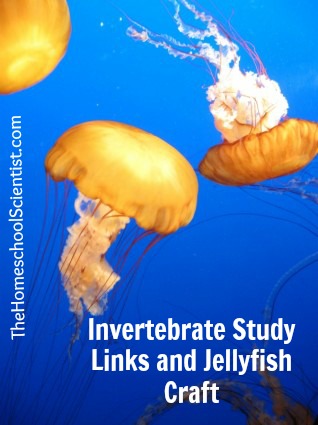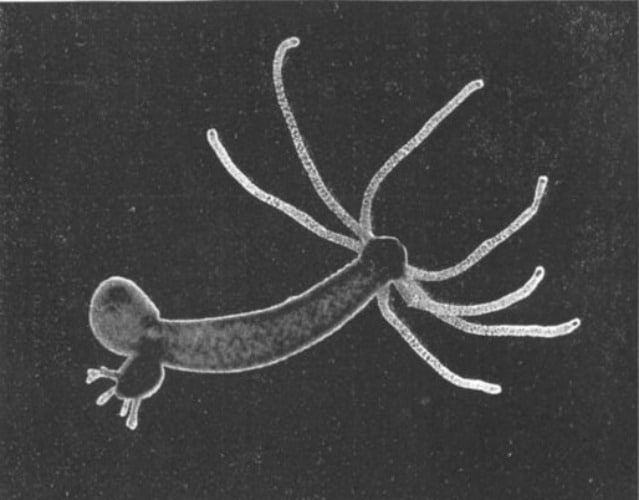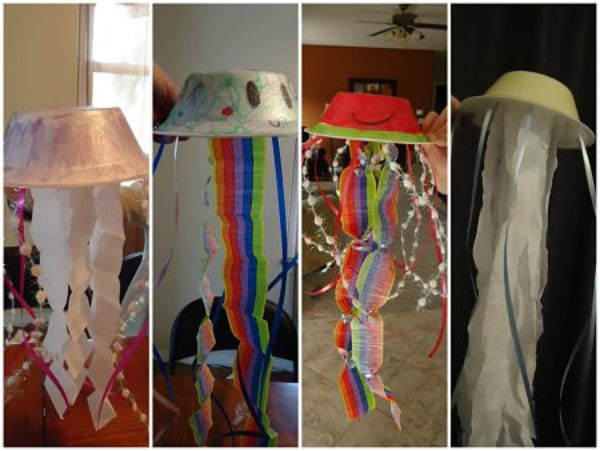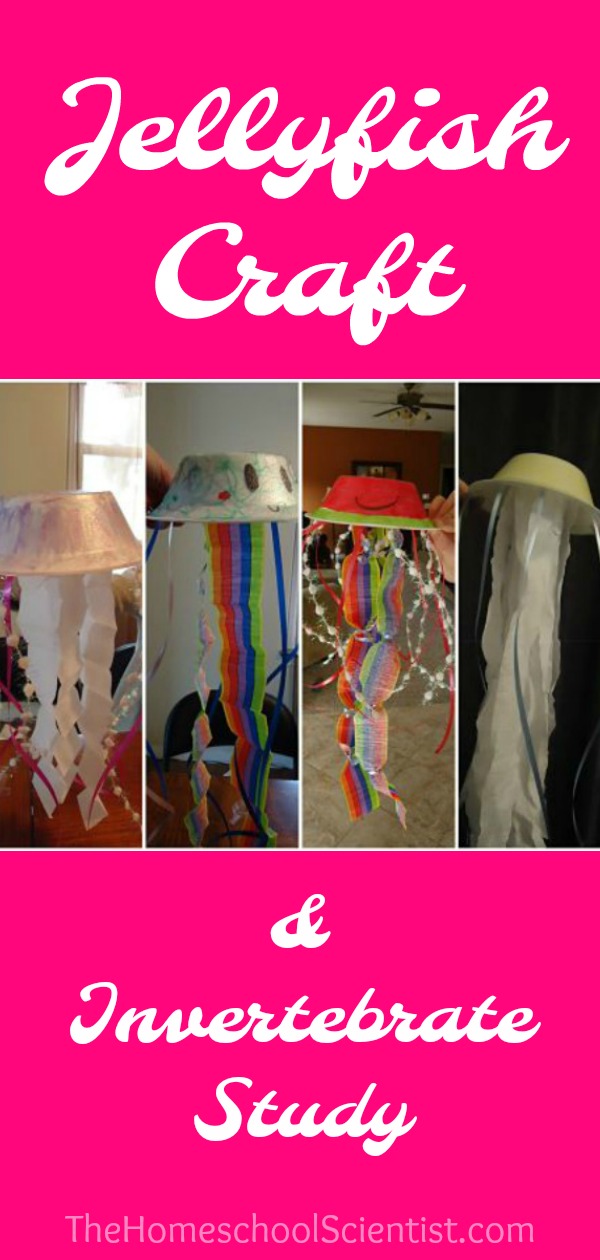Invertebrate Study Links And A Jellyfish Craft

Once a week, I teach the lab section of biology to a group of high school homeschool students. We review the chapter, I answer questions, and help the students with their experiments. Last week, we started studying invertebrates.
What Are Invertebrates?
Invertebrates are animals without a backbone. The diversity and number of animals in this group are amazing. This huge classification makes up 97% of the animal species on Earth and encompasses organisms from microscopic single-celled animals to giant squid. You will find animals like insects, clams, protozoa, worms, and jellyfish in this group, as well.

The hydra is a great first invertebrate specimen to study under the microscope. It’s unique structure is easy to pick out. The students in my class found their hydra on a prepared slide and then sketched them in their lab books. Sketching what is observed is a very important part of any study. It forces students to more closely observe whatever it is they have to sketch. They will notice things that they would miss at a passing glance.
Not sure what type of microscope to get ? Here are my tips for choosing a homeschool science microscope.
Invertebrate Links
Even though we used the Apologia Biology curriculum, I couldn’t help but encourage the students to dive a little deeper and do further research on a particular invertebrate that interested them. Here are some links to help you learn more about invertebrates.
General Invertebrate Information
- Invertebrates – Duckster.com
- Invertebrates – Biology4Kids.com
- What is an invertebrate? – DK Find Out
Species Specific Invertebrate Information
- How To Create An Insect Collection
- Insect Classification Lesson
- a video on budding in hydrae
- Jellyfish Lake in Palau where the jellyfish have no sting and people snorkel among them
- Lots of invertebrate photos, videos and information from Arkive.org
- Comb jellies
- Jellyfish early reader
- Jellies: The Life Of Jellyfish
- Field Guide to Freshwater Invertebrates of North America
- World Jellyfish Day!
Jellyfish Craft
And then, we got crafty. I think I got this idea from a list of party crafts for young children, but I thought it would be something fun and different for the older students. Even though this seemed to be more craft than science, it allowed the students to construct a jellyfish of their own. They had to think about the 3 main visible parts of a jellyfish and then represent them with the materials given.
Jellyfish Craft Supplies
- Styrofoam or plastic bowls
- Crepe paper streamers
- Tape
- Ribbon (We used curling ribbon.)
- Pom-pom ribbon

DIY Jellyfish
The students used Styrofoam bowls for the bell, or body, of the jellyfish. Crepe streamers made great thick feeder arms. The tentacles and their nematocysts were made with ribbon and decorative wire with pom-poms.
As you can see, our scientists/artists took some creative liberties with the colors and some even put smiley faces even though they know that the jellyfish feed from underneath their bells.
Sometimes you have to stop and have a little fun with science, even with older students. It was fun hearing them talk about their ideas about how to best represent tentacles and feeder arms. Even though they were doing a craft, they were using it to understand the structure of the jellyfish. Mission accomplished!
Do you have a favorite creative science activity?
I hold a master’s degree in child development and early education and am working on a post-baccalaureate in biology. I spent 15 years working for a biotechnology company developing IT systems in DNA testing laboratories across the US. I taught K4 in a private school, homeschooled my children, and have taught on the mission field in southern Asia. For 4 years, I served on our state’s FIRST Lego League tournament Board and served as the Judging Director. I own thehomeschoolscientist and also write a regular science column for Homeschooling Today Magazine. You’ll also find my writings on the CTCMath blog. Through this site, I have authored over 50 math and science resources.



